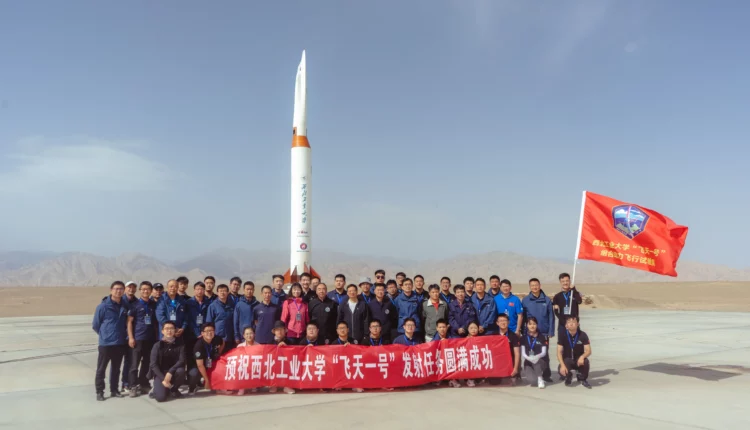©2021 Reporters Post24. All Rights Reserved.
Chinese researchers have allegedly designed a long-range, hypersonic, solid-fueled, air-to-surface missile (SAM). The new missile has a range of 1,240 miles (2,000 km) and could be used to shoot down airborne early warning and control (AEWAC) aircraft and bombers, South China Morning Post (SCMP) reported on Thursday.
First unveiled in the Chinese peer-reviewed Journal of Graphics, if claims are true, the SAM would be unprecedented for its size. The longest-range SAM currently in operation is the Russian S-500 system. This has a maximum range of 300 miles (500 km).
This new missile would quadruple that, making it a potent aerial defense system for the Chinese People’s Liberation Army (PLA). With this massive range, the missile would technically be a class of its own. To this end, the research team dubbed it an “ultra-long-range” SAM.
The existence of this missile would also challenge a long-held doctrine that ultra-long-range aerial defense is impossible. This is especially the case with existing systems with ranges of ten to hundreds of kilometers.
Rise of the ultra-long-range SAM
The Russian S-500 aside, other common systems, like the U.S. MIM-104 Patriot, range around 43 miles (70 km). China’s existing stockpile of SAM systems includes the HQ-9, which has the longest range.
A derivative of the Russian S-300 system, this semi-active radar-homing SAM ranges around 186 miles (300 km). The research team, led by Su Hua, claimed that their weapon could intercept early-warning aircraft and bombers. Hau is an associate researcher at Northwestern Polytechnical University.
If true, this would prevent them from intervening in potential regional conflicts.
SCMP reports that the paper states that the PLA would first issue a warning to the country of origin of any aircraft it targets. They would then only open fire if the aircraft failed to retreat. This technology is considered highly important for preserving both regional and global peace and stability.
According to a report, the missile was developed in response to the PLA’s expressed need for a cost-effective weapon that is also convenient for daily operations.

The PLA also stipulated that the SAM should be suitable for vehicle-mounted mobile launches and not exceed 33 feet (10 meters) in length or 4 tonnes in weight.
Little else is known about the missile
Su and his team have designed an ultra-long-range SAM that has exceeded expectations. The missile is only 26 feet (8 meters) long and weighs 2.5 tonnes. A solid rocket motor will provide the necessary thrust for vertical launch, followed by a ramjet engine to propel the missile into the upper atmosphere.
The paper did not provide any information about the missile’s appearance. Still, the design parameters suggest that it may be similar to the Feitian-1 hypersonic vehicle, which the university successfully tested two years ago.
SCMP reports that the Feitian-1 is fueled by kerosene and designed to fly continuously within the atmosphere, making it the world’s first hypersonic vehicle with an extended range.
The researchers added that real-time data from reconnaissance satellites will guide the missile and will switch to its own sensors in the final approach. It would then detonate its warhead when it reaches an effective kill range.


